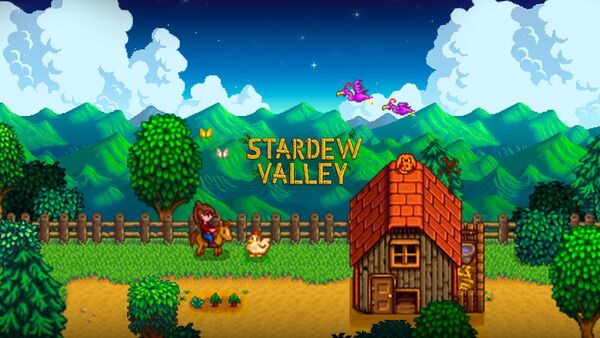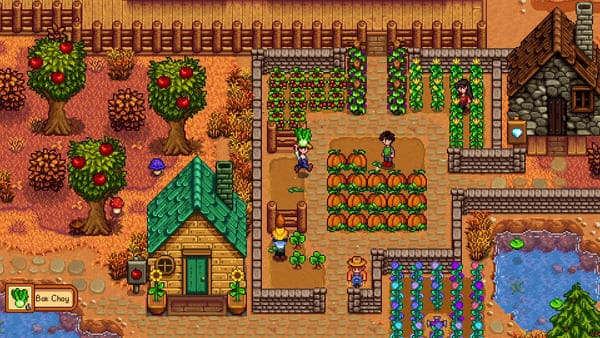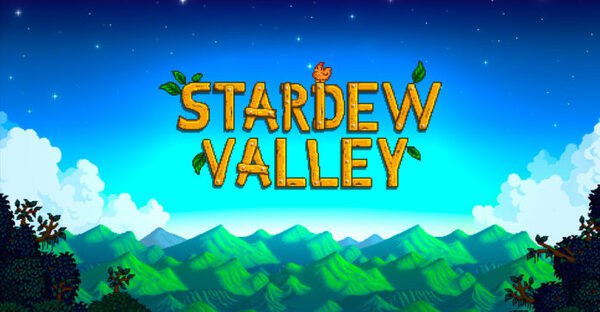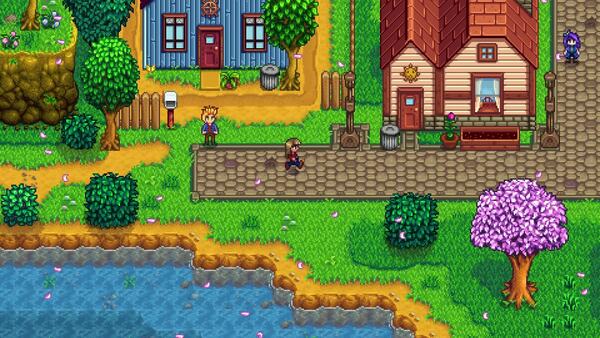Advertisement
Popular Now
Stardew Valley has captured the hearts of gamers around the world, offering a pixelated paradise where players can escape the hustle and bustle of modern life. However, beneath its charming exterior lies a complex ecosystem of farming mechanics, community interactions, and resource management. At the core of this experience is the art of crop management, a skill that requires both strategy and foresight. This article will explore the intricacies of farming in Stardew Valley, focusing on crop management strategies, sustainability practices, and the impact of seasonal changes on gameplay. By examining these elements in detail, players can enhance their farming experience and contribute to a thriving in-game community.
 Crop management is a fundamental aspect of Stardew Valley, affecting not only a player’s income but also their ability to progress in the game. Efficient crop management involves understanding growth cycles, optimizing planting strategies, and adapting to seasonal changes.
Crop management is a fundamental aspect of Stardew Valley, affecting not only a player’s income but also their ability to progress in the game. Efficient crop management involves understanding growth cycles, optimizing planting strategies, and adapting to seasonal changes.
 Effective crop management requires strategic planning when it comes to planting and harvesting. Players must consider several factors to maximize their yield.
Effective crop management requires strategic planning when it comes to planting and harvesting. Players must consider several factors to maximize their yield.
 Spring marks the beginning of a new farming year, offering players a chance to plant a wide variety of crops.
Spring marks the beginning of a new farming year, offering players a chance to plant a wide variety of crops.
 As summer ends, fall brings a bountiful harvest but also requires careful planning.
As summer ends, fall brings a bountiful harvest but also requires careful planning.
 As players navigate the complexities of crop management, incorporating sustainable practices becomes vital for long-term success.
As players navigate the complexities of crop management, incorporating sustainable practices becomes vital for long-term success.
The Importance of Crop Management
 Crop management is a fundamental aspect of Stardew Valley, affecting not only a player’s income but also their ability to progress in the game. Efficient crop management involves understanding growth cycles, optimizing planting strategies, and adapting to seasonal changes.
Crop management is a fundamental aspect of Stardew Valley, affecting not only a player’s income but also their ability to progress in the game. Efficient crop management involves understanding growth cycles, optimizing planting strategies, and adapting to seasonal changes.
Understanding Crop Growth Cycles
Every crop in Stardew Valley has a unique growth cycle that dictates how long it takes to mature, when it can be planted, and how many harvests can be obtained in a season.Growth Time and Harvests
- Spring Crops: These typically take between 4 to 12 days to grow, with some, like strawberries, producing multiple harvests.
- Summer Crops: Crops such as blueberries and melons require more time but can yield multiple harvests, making them highly profitable.
- Fall Crops: High-value options like pumpkins can take 13 days but offer significant returns.
Planting Strategies: Maximizing Yield
 Effective crop management requires strategic planning when it comes to planting and harvesting. Players must consider several factors to maximize their yield.
Effective crop management requires strategic planning when it comes to planting and harvesting. Players must consider several factors to maximize their yield.
Crop Selection and Rotation
Choosing the right crops for each season and rotating them each year can help maintain soil health and optimize profits.Crop Rotation Benefits
- Soil Health: Alternating crops helps replenish soil nutrients and prevents depletion.
- Pest Management: Diverse crops can reduce pest infestations and promote a healthier ecosystem.
Seasonal Changes: A Dynamic Influence
Seasons in Stardew Valley are not just a backdrop; they play a crucial role in shaping gameplay. Each season introduces unique crops, events, and challenges, making it essential for players to adapt their strategies accordingly.Spring: The Season of Renewal
 Spring marks the beginning of a new farming year, offering players a chance to plant a wide variety of crops.
Spring marks the beginning of a new farming year, offering players a chance to plant a wide variety of crops.
Key Spring Crops
- Strawberries: A fan-favorite for their multi-harvest capability, strawberries can be planted after the Egg Festival.
- Cauliflower: Although it takes 12 days to grow, its high selling price makes it worth the investment.
Summer: The Peak of Growth
Summer is often considered the most productive season in Stardew Valley, with many high-yield crops available.Summer Crop Strategies
- Blueberries: With the ability to yield multiple harvests, these are among the most profitable crops.
- Melons: Though they take longer to grow, their selling price is significant.
Fall: The Harvest Season
 As summer ends, fall brings a bountiful harvest but also requires careful planning.
As summer ends, fall brings a bountiful harvest but also requires careful planning.
Fall Crop Opportunities
- Cranberries: These crops provide multiple harvests and can be a stable income source.
- Pumpkins: While they take 13 days to grow, their high price point makes them a lucrative option.
Winter: A Season of Rest and Reflection
Winter presents unique challenges for farmers, as most outdoor crops cannot grow during this time.Strategies for Winter Farming
- Greenhouses: Unlocking the greenhouse allows players to grow crops year-round.
- Animal Husbandry: Focusing on animals can provide a steady source of income during the winter months.
Sustainable Farming Practices
 As players navigate the complexities of crop management, incorporating sustainable practices becomes vital for long-term success.
As players navigate the complexities of crop management, incorporating sustainable practices becomes vital for long-term success.
The Role of Organic Farming
In Stardew Valley, organic farming practices can enhance both crop yields and soil health.Implementing Organic Techniques
- Natural Fertilizers: Using compost or ancient fruit as fertilizers can boost crop growth without harming the environment.
- Pest Control: Encouraging beneficial insects through diverse planting can reduce the need for pesticides.
The Importance of Water Management
Water is a critical resource in Stardew Valley, and managing it effectively is essential for sustainable farming.Irrigation Systems
Investing in irrigation systems, such as sprinklers, allows players to automate watering, conserving both time and energy.Types of Sprinklers
- Basic Sprinkler: Waters four adjacent crops but requires manual refilling.
- Quality Sprinkler: Waters eight adjacent crops and is more efficient.
- Iridium Sprinkler: Waters a 5x5 area, making it the most efficient option.
Economic Implications of Crop Management
The economic aspects of crop management in Stardew Valley are intricate, influencing players’ decisions throughout their farming journey.Profit Margins: Understanding Value
Not all crops are created equal when it comes to profitability. Players must analyze the potential return on investment for each crop.High-Value Crops
- Starfruit: While available only in summer, its high selling price makes it a worthwhile investment.
- Artisan Goods: Processing crops into goods such as wine or pickles can significantly increase their value.
Market Demand and Crop Choices
Market demand can fluctuate, and players must stay attuned to these changes to optimize their profits.Factors Influencing Demand
- Community Center Bundles: Completing bundles may require specific crops, influencing their value.
- Seasonal Events: Festivals may increase demand for particular items, allowing for strategic selling opportunities.
The Community Center: A Hub of Sustainability
The Community Center in Stardew Valley serves as a central hub for players to engage in sustainability efforts while enhancing their farming experience.Completing Bundles for Community Good
Players can contribute to various bundles at the Community Center, which often require specific crops or artisan goods.Types of Bundles
- Crop Bundles: Require a variety of seasonal crops, encouraging diverse farming practices.
- Artisan Bundles: Focus on processed goods, promoting sustainable crop management through value-added products.
The Social Impact of Farming
Engaging with the Community Center fosters a sense of connection and purpose, enhancing the overall gameplay experience.Building Relationships Through Community Engagement
- Festivals: Participation in community festivals helps deepen relationships with townsfolk.
- Shared Goals: Working toward common sustainability goals fosters a sense of community among players and NPCs alike.
Challenges and Consequences of Poor Management
While Stardew Valley encourages sustainable practices, it also serves as a cautionary tale about the consequences of poor resource management.The Risk of Over-Farming
Neglecting sustainable practices can lead to significant setbacks in crop productivity and soil health.Negative Outcomes of Over-Farming
- Depleted Soil: Continuous planting of the same crops without rotation can result in nutrient depletion, leading to lower yields.
- Increased Pests: Lack of biodiversity can attract pests, requiring increased efforts to manage infestations.
The Environmental Impact of Neglect
In addition to economic consequences, neglecting sustainable practices can lead to a decline in the overall health of the in-game environment.Visual Indicators of Environmental Degradation
- Barren Fields: Fields devoid of crops and wildlife signal poor farming practices.
- Reduced Biodiversity: A lack of variety in crops and animals reflects unsustainable farming methods.

















